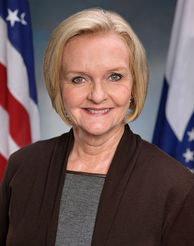Women Reelected to US Senate at Same Rate as Men
A study of more than 325 sitting U.S. Senators on the ballot since 1990 finds women have been reelected at exactly same rate as men – 87 percent

Such a milestone was not expected just a few months prior when Missouri Democratic incumbent Claire McCaskill looked vulnerable, Wisconsin Democrat Tammy Baldwin was in a dead heat against Tommy Thompson, and North Dakota Democrat Heidi Heitkamp seemed to be on the outside looking in as she battled Rick Berg in her open seat contest.
But the road to reach 20 seats has been exceedingly long – taking 90 years since the first woman was seated in the senate in 1922 (Georgia’s Rebecca Latimer Felton, by appointment) and 80 years since the first woman was elected to her seat (Arkansas’ Hattie Wyatt Caraway in 1932).
And will women add to their 20-seat total and inch closer toward equal representation in the nation’s upper legislative chamber after the 2014 cycle?
To do so, they will need strong performances by four female incumbents up for reelection in two years – some of whom could face strong opposition in the general election (Democrats Mary Landrieu of Louisiana, Jeanne Shaheen of New Hampshire, and Kay Hagan of North Carolina) or even a primary challenge (Republican Susan Collins of Maine).
Despite the potentially difficult road ahead, there is one reason for optimism.
While women may still face hurdles getting on the ballot and elected in the first instance to the highest legislative office in the land (as they do in executive offices up the ballot), the data shows they are able to retain their seats as successfully as men once they get there.
In short, women have demonstrated that the incumbency advantage is as a formidable asset for them as it is for men in holding onto U.S. Senate seats over the last generation.
A Smart Politics analysis of 326 U.S. Senate elections since 1990 finds that female U.S. Senators have been reelected at the same rate as men during this 12-cycle span with 87 percent of both groups winning their contests.

By contrast, during the 34 cycles from 1922 through 1988, there were only 10 female U.S. Senators seeking reelection, and never more than two in a single decade.
Winning reelection also proved difficult with only six of these 10 attempts successful from the first such bid in 1932 by Arkansas’ Hattie Carraway:
· Arkansas Democrat Hattie Caraway, who was appointed in 1931, won Senate races as an incumbent in 1932 and 1938 before failing to win her party’s nomination in 1944 (in a race won by Democrat James Fulbright).
· Maine Republican Margaret Chase Smith won reelection bids in 1954, 1960, and 1966 before losing in her attempt for a fifth term in 1972 – falling 6.4 points shy of Democrat William Hathaway.
· Maryon Allen lost her bid for the Democratic nomination in 1978 for the special election for the seat held by her deceased husband, James Allen. Democrat Donald Stewart eventually won the seat.
· In 1984, Kansas Republican Nancy Kassebaum rolled to the first of her two reelection victories, notching 76 percent of the vote.
· In 1986, Florida Republican Paula Hawkins lost by 9.4 points to Democrat Bob Graham in her bid for a second term.
Since 1990, however, women have retained their U.S. Senate seats in 36 of 41 contests, or 87.8 percent of the time.
Male U.S. Senators, meanwhile, have won reelection in 249 of 285 contests since 1990, for a nearly identical reelection rate of 87.4 percent.
The only women who attempted to hold their seat in the chamber and failed during the last 22 years are:
· Appointed Republican Senator Sheila Frahm of Kansas, who lost the GOP nod to Sam Brownback for the 1996 special election to replace Bob Dole, who stepped down to run for the presidency.
· Democrat Carol Moseley Braun of Illinois, who lost a bid for a second term in 1998 to Republican Peter Fitzgerald by 2.9 points.
· Appointed Democratic Senator Jean Carnahan of Missouri, who lost a special election by 1.1 points to Jim Talent in 2002 for the seat won posthumously by her husband Mel Carnahan in 2000.
· Republican Elizabeth Dole of North Carolina, who was defeated by Democrat Kay Hagan in 2008 by 8.5 points.
· Arkansas Democrat Blanche Lincoln who was trounced by Republican John Boozman in her bid for a third term in 2010 by 21.0 points. Lincoln is the only incumbent female Senator in U.S. history to lose in a general election contest by more than 10 points.
As for men, at least one such incumbent has been defeated in each of these 12 cycles since 1990.
The high water mark during this period was six men defeated in 2000 (Democrat Chuck Robb of Virginia and Republicans William Roth of Delaware, Spencer Abraham of Michigan, Rod Grams of Minnesota, John Ashcroft of Missouri, and Slade Gorton of Washington) and 2006 (Republicans Jim Talent of Missouri, Conrad Burns of Montana, Mike DeWine of Ohio, Rick Santorum of Pennsylvania, Lincoln Chafee of Rhode Island, and George Allen of Virginia.
The 285 male U.S. Senators on the ballot since 1990 include nine who were first appointed into office – eight of whom won their subsequent senate bids.
Overall, of the 44 women who will have served in the U.S. Senate once the 113th Congress convenes in January, 15 were first appointed into office and 29 were elected.
Of the 29 women who were first elected into office:
· 8 unseated an incumbent in a general or special election: Dianne Feinstien of California, Kay Bailey Hutchison of Texas, Maria Cantwell of Washington, Debbie Stabenow of Michigan, Claire McCaskill of Missouri, Jeanne Shaheen of New Hampshire, Kay Hagan of North Carolina, and Elizabeth Warren of Massachusetts.
· 1 knocked off an incumbent from her own party in a primary: Carol Mosely Braun of Illinois.
· 18 won regular open seat races: Margaret Chase Smith of Maine, Nancy Kassebaum of Kansas, Paula Hawkins of Florida, Barbara Mikulski of Maryland, Patty Murray of Washington, Barbara Boxer of California, Olympia Snowe of Maine, Mary Landrieu of Louisiana, Susan Collins of Maine, Blanche Lincoln of Arkansas, Hillary Rodham Clinton of New York, Elizabeth Dole of North Carolina, Amy Klobuchar of Minnesota, Kelly Ayotte of New Hampshire, Mazie Hirono of Hawaii, Deb Fischer of Nebraska, Heidi Heitkamp of North Dakota, and Tammy Baldwin of Wisconsin.
· 2 won open seat special elections: Hazel Abel of Nebraska and Maurine Neuberger of Oregon.
Reelection Rate of U.S. Senators by Gender, 1990-2012
|
Cycle
|
# Men
|
Won
|
Lost
|
% Won
|
# Women
|
Won
|
Lost
|
% Won
|
|
1990
|
31
|
30
|
1
|
96.8
|
1
|
1
|
0
|
100.0
|
|
1992
|
27
|
22
|
5
|
81.5
|
1
|
1
|
0
|
100.0
|
|
1994
|
24
|
22
|
2
|
91.7
|
2
|
2
|
0
|
100.0
|
|
1996
|
20
|
19
|
1
|
95.0
|
1
|
0
|
1
|
0.0
|
|
1998
|
25
|
23
|
2
|
92.0
|
4
|
3
|
1
|
75.0
|
|
2000
|
26
|
20
|
6
|
76.9
|
3
|
3
|
0
|
100.0
|
|
2002
|
25
|
22
|
3
|
88.0
|
3
|
2
|
1
|
66.7
|
|
2004
|
21
|
20
|
1
|
95.2
|
5
|
5
|
0
|
100.0
|
|
2006
|
23
|
17
|
6
|
73.9
|
6
|
6
|
0
|
100.0
|
|
2008
|
27
|
23
|
4
|
85.2
|
3
|
2
|
1
|
66.7
|
|
2010
|
19
|
16
|
3
|
84.2
|
6
|
5
|
1
|
83.3
|
|
2012
|
17
|
15
|
2
|
88.2
|
6
|
6
|
0
|
100.0
|
|
Total
|
285
|
249
|
36
|
87.4
|
41
|
36
|
5
|
87.8
|
Note: Includes U.S. Senators running for election that were first appointed into office. Table compiled by Smart Politics.
Follow Smart Politics on Twitter.
